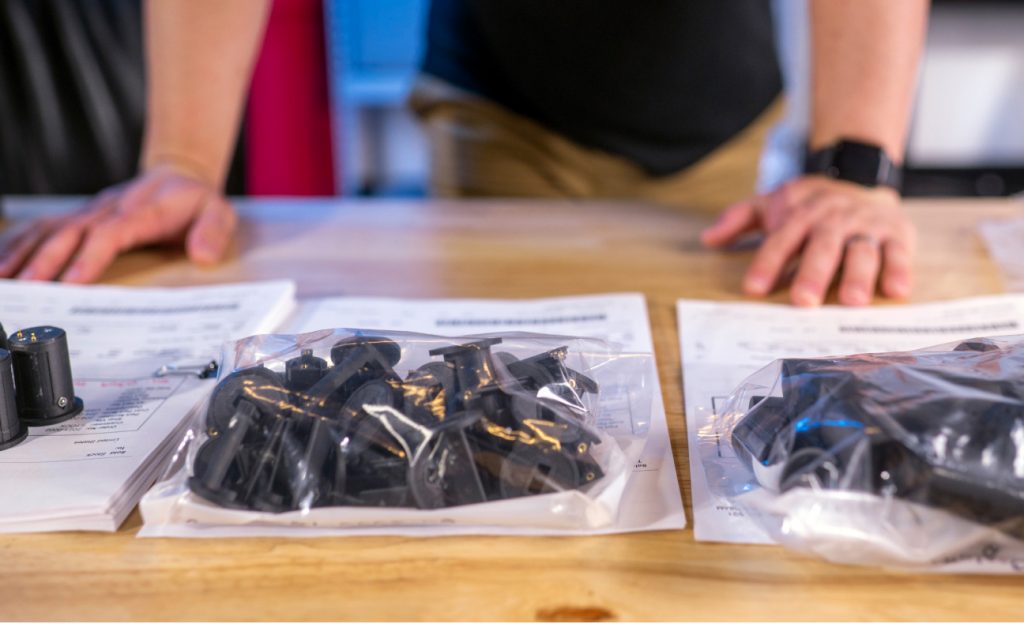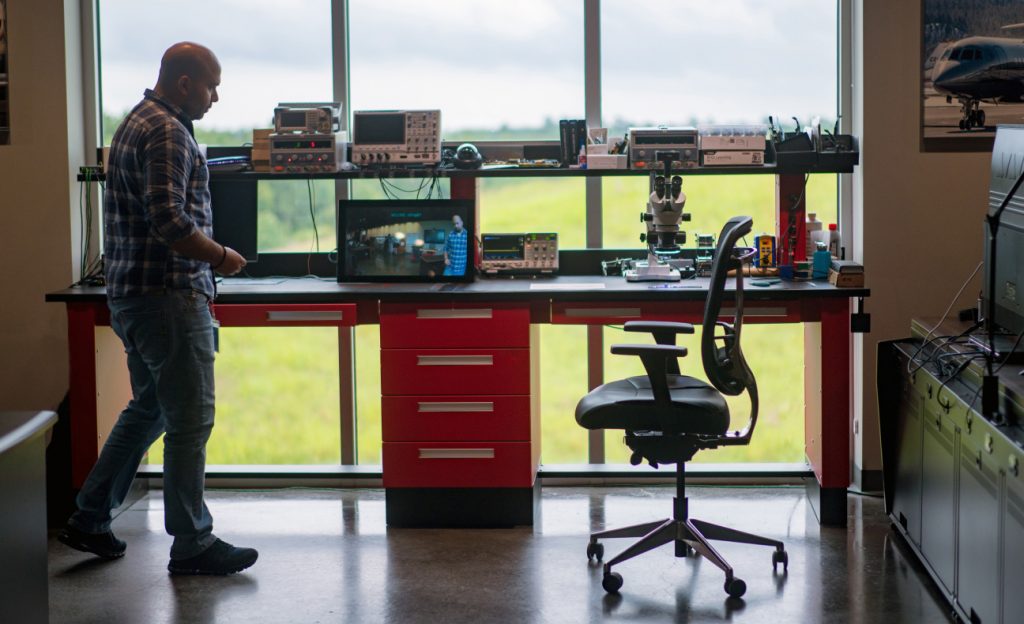The nominations for the 2021 3D Printing Industry Awards are now open. Who do you think should make the shortlists for this year’s show? Tell us now before this week’s deadline.
Cabin Management Solutions (CMS), a developer of in-flight entertainment systems, is using Markforged 3D printing technology to create FAA-compliant parts for luxury aircraft.
Having invested in two Markforged X7 carbon fiber 3D printers, CMS has already leveraged the systems to 3D print hundreds of end-use cabin interior upgrades, as well as replacement spare parts. The firm states that the integration of 3D printing technology into its day-to-day workflows has enabled a new level of cost and time-efficiency for its customers.
“CMS has incorporated Markforged technology into their business in a way that enables them to maintain their reputation for high quality and give themselves a competitive advantage,” said Shai Terem, President and CEO of Markforged. “Our technology is not only about printing parts faster and at the point of need, but also giving aerospace manufacturers the confidence that their parts meet the regulatory and functional requirements of their industry.”

Composite 3D printing: How the other half lives
Founded in 2019, CMS works primarily with MRO companies and private jet owners to design and manufacture cabin control systems for luxury aircraft. The firm is often hired to upgrade aging cabin systems so many of its projects involve discontinued and obsolete components, forcing CMS to design alternatives from scratch. These parts include overhead reading lights, thermostats, panel switches, USB chargers, in-seat entertainment screens, and more.
All flight-ready components must be tested and traceable in order to be FAA compliant, with many of CMS’ parts requiring high strength, low weight, and flame retardancy. As such, the company’s main material of choice is Markforged’s Onyx FR, a flame-resistant, self-extinguishing carbon fiber-filled nylon filament.
The use of additive manufacturing also enables CMS to keep its prototyping and end-use manufacturing in-house, eliminating the need for costly third-party manufacturers and the associated lengthy lead times.
“In the aerospace industry, quality and on-the-fly adaptability are crucial to success,” adds Jeff Pike, VP of Engineering at CMS. “We often have to produce low-volume, high-value parts from scratch which can be time- and labor-intensive. Markorged’s X7 allows us to do this quickly and more efficiently, while ensuring functionality and retaining the upscale aesthetics expected in luxury aircraft.”

Over 100 3D printed parts
On one of its projects, CMS 3D printed over 100 different aircraft parts using the X7, including more than 20 light switches, a cabin climate controller, latches, release buttons, USB-C and drop-in USB-A chargers, and adjustable touch screen brackets. Most of these components were then electroplated with gold-plated bezels to match the existing upscale color scheme of the aircraft.
Going forward, CMS plans to utilize two of Markforged’s new 3D printing materials, Onyx FR-A and Carbon Fibre FR-A – aerospace-grade versions of the company’s Onyx FR and Carbon Fibre FR filaments. The new materials are fully traceable and are currently undergoing qualification on the X7 3D printer as part of a program conducted by the National Center for Advanced Materials Performance (NCAMP), one of two bodies authorized by the FAA to qualify flight materials.

As CMS is no doubt aware, 3D printing can yield major cost and time benefits in the aerospace sector. Just this month, 3D printer OEM EOS and industrial 3D printing service provider Baltic3D teamed up with commercial MRO services provider Etihad Engineering to explore the serial 3D printing of interior aircraft parts. The R&D project, titled “FDM and SLS industrial 3D printing technology applicability in serial manufacturing of aircraft interior parts”, will see Baltic3D print thousands of material samples using EOS’ laser sintering technology.
Elsewhere, aerospace manufacturers GE Aviation and Safran recently announced the commencement of a demonstrator project focused on test-building a new open-bladed jet engine, and it’s set to feature metal 3D printed parts. Dubbed RISE (Revolutionary Innovation for Sustainable Engines), the environmentally-conscious engine is intended as a successor to the previously developed LEAP model.
Subscribe to the 3D Printing Industry newsletter for the latest news in additive manufacturing. You can also stay connected by following us on Twitter, liking us on Facebook, and tuning into the 3D Printing Industry YouTube Channel.
Looking for a career in additive manufacturing? Visit 3D Printing Jobs for a selection of roles in the industry.
Featured image shows gold-plated control panels 3D printed by CMS. Photo via CMS.



